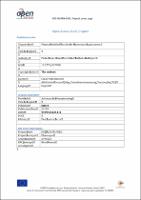Chapter 5 Plasma Modified Textiles for Biomedical Applications
Author(s)
Morent, Rino
De Geyter, Nathalie
Cools, Pieter
Cools, Pieter
Morent, Rino
De Geyter, Nathalie
Collection
European Research Council (ERC)Language
EnglishAbstract
In the textile market industry, technical textiles are one of the fastest growing businesses. Part of that industry consists of textiles for medical and healthcare applications and are responsible for a continuous increase in its market potential [1]. Next to their need in hospital environments, there is a growing demand in other sectors such as the food and hotel industry, due to stricter hygiene regulations. In most cases biomedical textile meets a well-defined set of requirements such as minimizing non-specific protein adsorption, drug delivery coatings or the presence of active functional coatings and most importantly excellent biocompatibility (blood-, tissue-or cyto-compatibility) [2]. In general there are very few materials meeting all these characteristics, while at the same time offering the needed structural and mechanical properties. Furthermore, depending on the application, the production process has to be cost-effective and approved by local legislation.
Keywords
plasma modified textiles; biomedicine; plasma modified textiles; biomedicine; Blood plasma; Electrospinning; Nonwoven fabric; Surface modification of biomaterials with proteins; Tissue engineeringDOI
10.5772/59770OCN
1030816817Publisher
InTechOpenPublisher website
https://www.intechopen.com/Publication date and place
2015Grantor
Classification
Science: general issues


 Download
Download